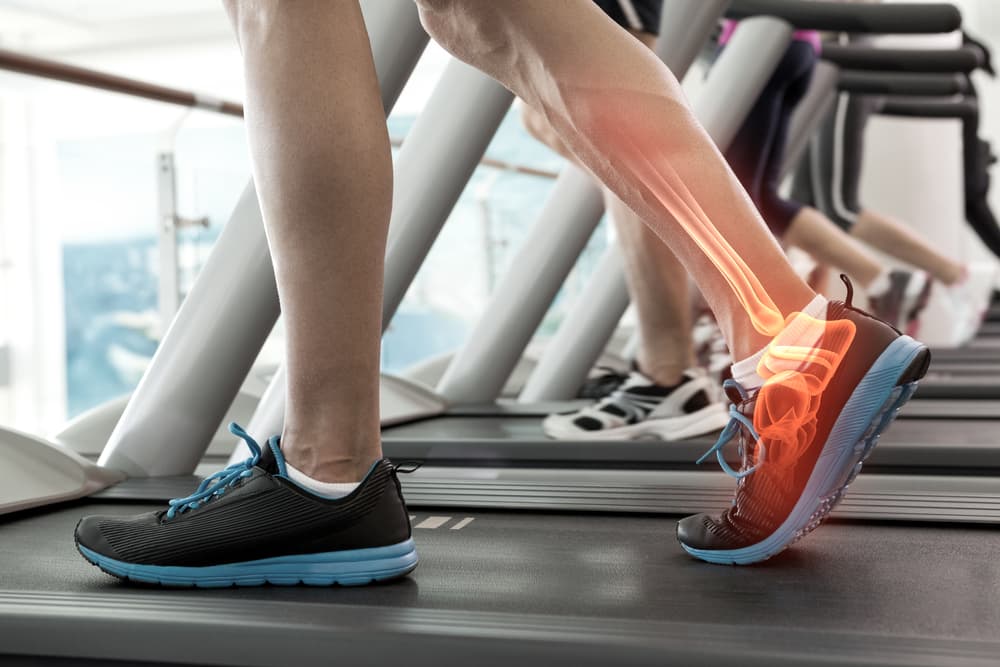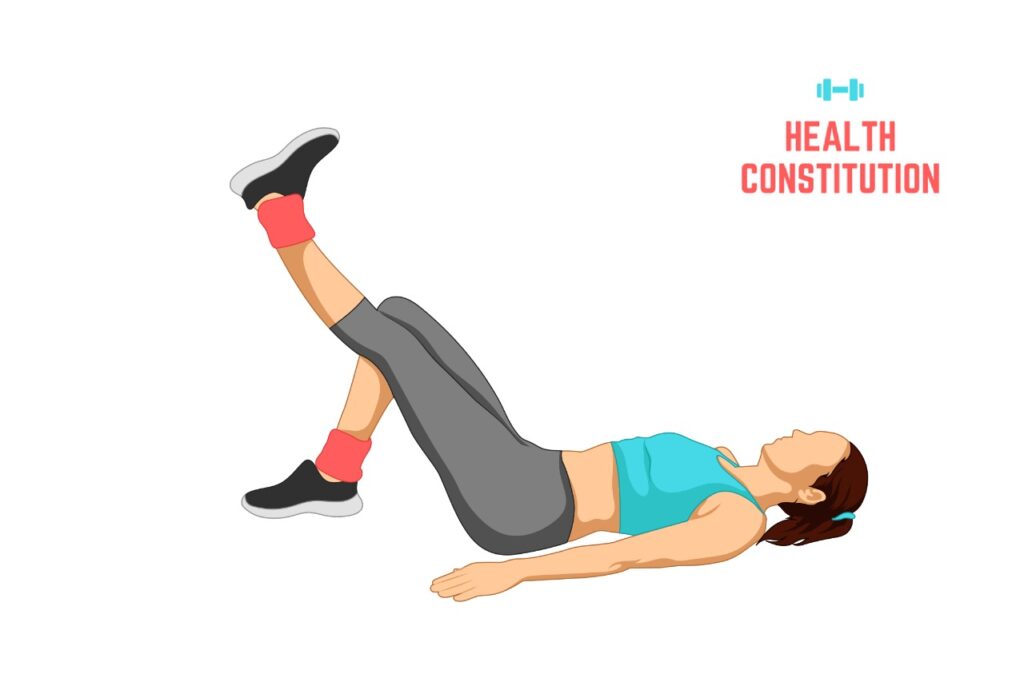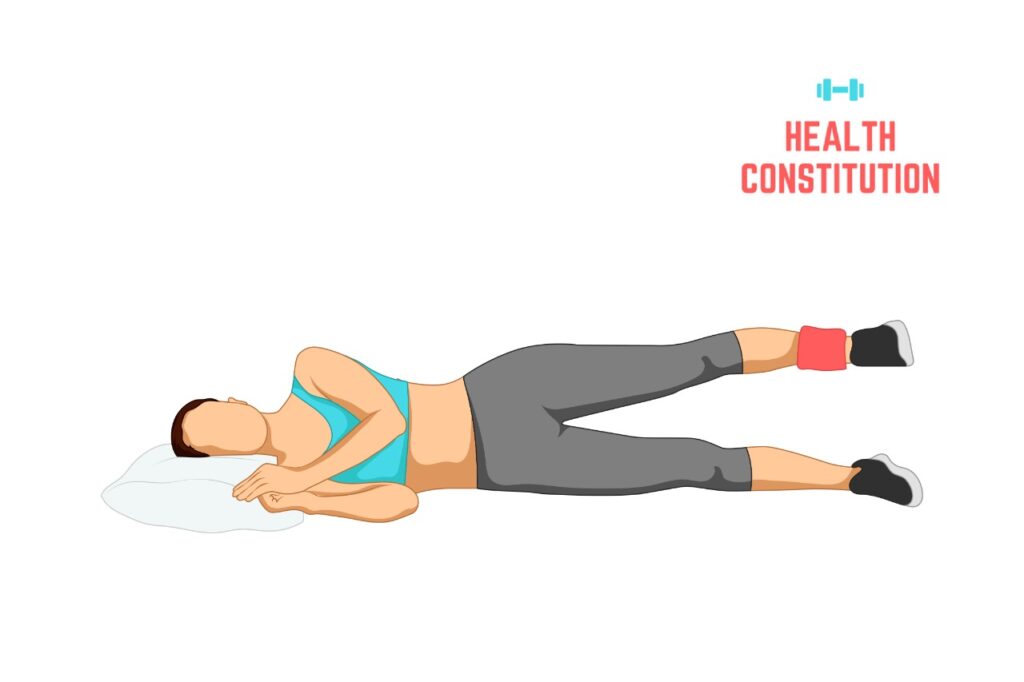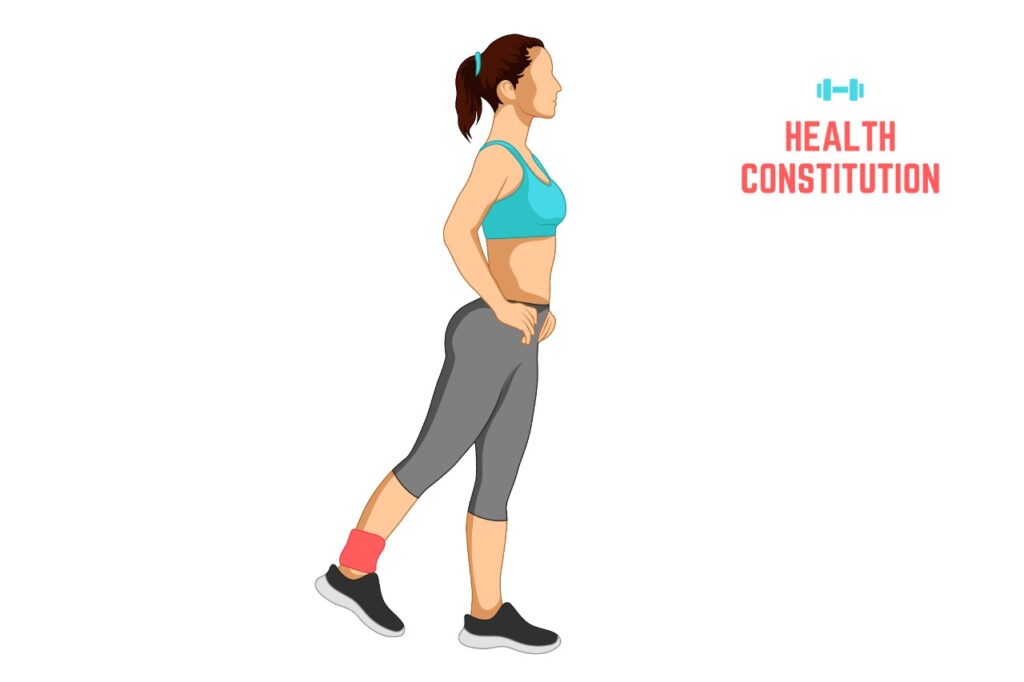If you are asking yourself, “are ankle weights good for walking on the treadmill?”, read on.
Walking, when broken down, is an exceptionally complex task that requires whole-body strength and coordination to be successful. It is also the fundamental component in maintaining our ability to go about our activities of daily living unaided.
As exercise goes, treadmill running and walking may seem like one of the more mundane, run-of-the-mill options for improving aerobic fitness.
As a low-intensity endurance workout walking has multiple benefits including increasing calorie burn, improving cardiopulmonary function, maintaining skeletal strength, and sustaining normal circulation.
The downside to walking, especially when using a treadmill, is that it takes a long time to achieve results anywhere near that of higher intensity exercises. Unfortunately, it is also comparatively not very entertaining.
If you really want to step things up a notch then consider implementing ankle weights into your walking routine.
As an accessory, ankle/leg weights have been shown to be an effective addition to aerobic exercise, however, there are certain pros and cons to consider. In this article, we aim to explore those pros and cons further in a bid to help you decide if ankle weights are a beneficial addition for you.
Wrist and ankle weights aren’t without risks, but provided you use them wisely, they can be an effective addition to your next treadmill workout.
What are ankle weights?
Ankle weights are usually comprised of what is essentially a bag of sand or high-density foam with inserted metal and attached Velcro strips. They are a cheap and accessible piece of exercise equipment, found in most gyms and rehabilitation environments.

Benefits of using Ankle Weights
For general fitness and injury prevention, ankle weights can be a suitable and safe addition to your workout routine.
Existing research supports the theory that using ankle weights can increase aerobic fitness whilst decreasing waist circumference, over a 6-month period. In short, you can get fitter, lose more weight, and reduce more body fat versus just walking alone[1].
Further studies have also shown utilising wearable weights whilst walking increase oxygen uptake and heart rate[2]. This has a positive impact on your all-round cardiovascular health, which in the long term can contribute to a decreased risk of cardiovascular events such as heart attacks, strokes, etc.
From a biomechanical perspective, a 2017 study on the effects of ankle weights on healthy subjects had a beneficial influence on walking patterns[3]. This required the ankle weights to be approximately 1% of the participant’s body weight, split between each lower limb. It is worth noting that all participants were young, injury-free individuals, and results were recorded over a short-term period of 6 weeks. Further research looking at results of a longer-term trial will be beneficial in the future.
Disadvantages of using Ankle Weights
Although there are relatively few risks associated with the use of ankle weights whilst walking, the ones that do exist are important to consider.
Ankle weights inevitably put more strain on joints and the connective tissue around them.
If you are already suffering from tendon pain or creaky, irritable knees then ankle weights may not be appropriate for you. The increased load means more impact with each stride which, whilst beneficial for increasing bone density, may lead to flare-ups of already painful joints.
Altering your walking style to accommodate the extra load of ankle weights may also artificially overload certain muscle groups (eg. lower body muscles) and increase risk of injury if not used properly. Not only this but it would be reasonable to assume that as your walking style changes to compensate for the extra weight, so too does your balance and coordination.
This may have a detrimental effect on your balance and coordination.

Individual Considerations
Before rushing into using ankle weights to up the ante on your next walking workout, first, consider whether they are appropriate for you.
As a rule of thumb, I would not be keen on recommending ankle weights to those with an already irritable arthritic hip, knee, or ankle.
In the clinic, I also carefully consider my patient’s past medical history, including but not limited to: balance deficiencies and falls risk, neurological impairments, previous joint surgeries, connective tissue disorders, bone health, and age.
And as always, if you are unsure then do consult your nearest Physiotherapist, family physician, or appropriately qualified health professional.
Cost to buy and how to use
One set of reasonable ankle weights should set you back to no more than $100 from most Australian retailers.
Aim to use between 1-2% of your body weight to achieve the changes in aerobic and cardiovascular fitness discussed earlier.
Introduce them gradually into your normal exercise routine by slowly increasing the time spent wearing ankle weights. Make sure that you wear one on each leg with a 50/50 weight split.
The Velcro should be fastened securely enough that the device does not shuffle around as you move, but not so tightly that it feels uncomfortable or begins to dig into the skin. If the skin starts to look pale, mottled, or irritable then take off the ankle weights immediately. The last thing you want to do is cause a blister, skin sore, or interrupt your blood flow!
Most importantly of all, pay close attention to any subtle changes in the way you move and react. You may find yourself taking fewer steps, not striding out as far, or requiring more use of the arms. All these things are fine if they do not negatively impact your balance or bring on any unusual aches and pains.
If you are really keen on incorporating ankle weights into your exercise but find that doing so with walking is not for you, try these alternatives:



Summary
Ankle weights can be a great addition to walking or even light jogging on a treadmill for healthy, non-injured individuals.
How much weight should you use for ankle weight? Use weights that are accumulatively at least 1% but no more than 2% of your bodyweight.
Ankle weights are probably not for you if you have pre-existing hip, knee, or ankle problems.
Always consult a professional if you are not sure before making changes to your normal exercise/strength training routine so you can achieve your fitness goals safely.
[1] Yaacob, N., Yaacob, N., Ismail, A., Che Soh, N., Ismail, M., Mohamed, H. and Hairon, S., 2016. Dumbbells and ankle-wrist weight training leads to changes in body composition and anthropometric parameters with potential cardiovascular disease risk reduction. Journal of Taibah University Medical Sciences, 11(5), pp.439-447.
[2] GRAVES, J., MARTIN, A., MILTENBERGER, L. and POLLOCK, M., 1988. Physiological responses to walking with hand weights, wrist weights, and ankle weights. Medicine & Science in Sports & Exercise, 20(3), pp.265-271.
[3]Hwang JW, Lee SK, Park JS, Ahn SH, Lee KJ, Lee SJ. The effects of ankle weight loading on the walking factors of adults without symptoms. J Exerc Rehabil. 2017;13(4):425-429. Published 2017 Aug 29. doi:10.12965/jer.1734954.477
- Isometric vs Isotonic vs Isokinetic Exercises: Explained - 12 August 2022
- Is Pilates Better Than Weight Training? - 29 March 2022
- Can You Use A Massage Gun For Carpal Tunnel Syndrome? - 16 March 2022
